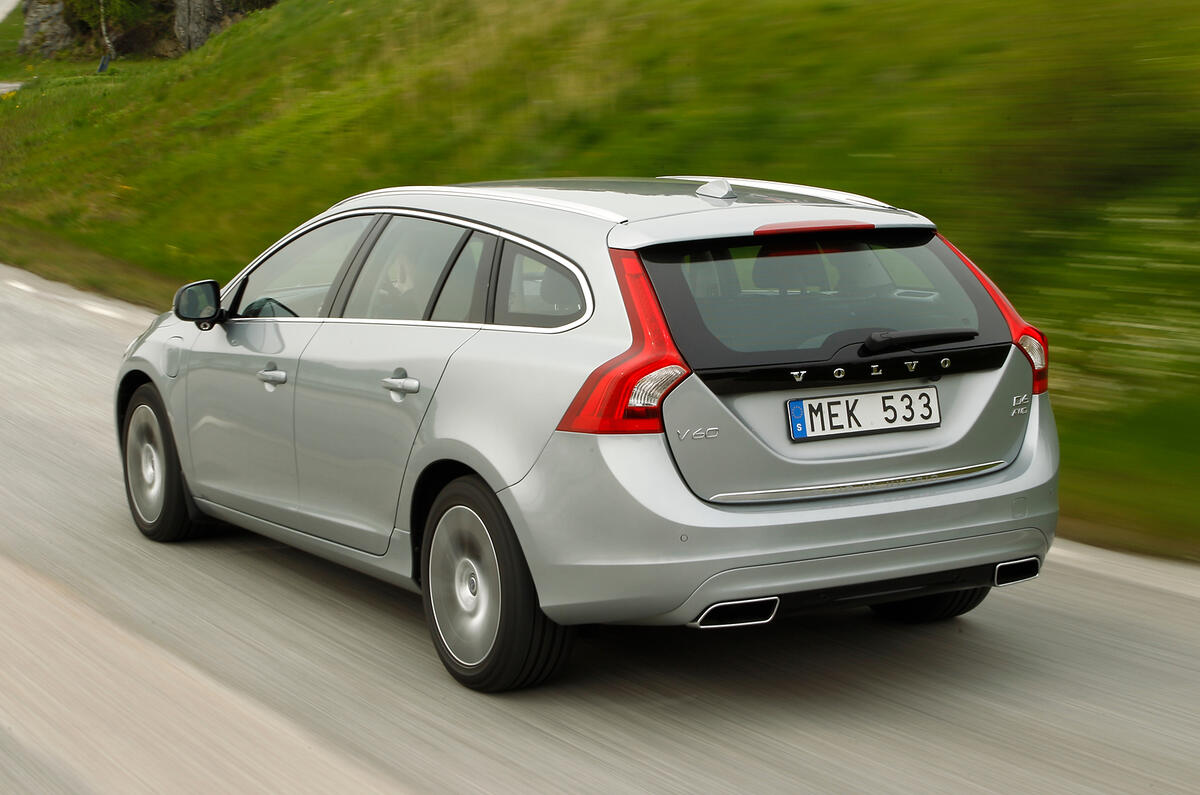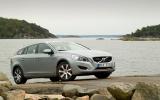What is it?
A diesel-electric plug-in hybrid. The first diesel-electric plug-in hybrid to go on sale, in fact. The Volvo V60 D6 is the product of four years of hard work for the team at Volvo behind it, and it would be a miserly observer who didn’t heap credit on the manufacturer for being first past the post with the technology.
Particularly as the format – mingling a diesel engine’s natural touring economy with an electric motor’s zero-emission function – is an appealing fit for Europe’s low CO2 emission, high mileage appetite.
But Volvo has set its sights higher than producing a welly-wearing eco-special. The new model is a high-priced range-topper that pairs its rear axle-mounted 69bhp electric motor with the butch 212bhp 2.4-litre five-cylinder diesel engine already established in the range.
The intention is to offer a car without compromise – or as Volvo likes to describe it: three cars in one. The D6’s 11.2kWh lithium-ion battery means it is capable of a 32-mile all-electric range, making it a zero-emission city runaround (and shaving £5000 from the list price courtesy of the familiar government grant).
Out of town the V60 becomes a full diesel-electric hybrid which, according to unofficial figures, is capable of 149mpg and average emissions as low as 49g/km CO2. Finally, when the mood takes you, it can summon up 471lb ft of multi-sourced torque, and mutate into an all-wheel drive sports estate capable of 0-62mph in 6.2 seconds.
What's it like?
Two cars in one, really. The D6 has the silent city car and cross country mile-eater aspects largely sewn up, but a performance wagon it isn’t. Partly this is because no matter what Volvo’s marketing department thinks, the V60 isn’t a particularly rewarding steer to begin with, and despite adding all-wheel-drive traction, the new tech lumbers the underwhelming chassis with an additional 300kg or so of kerb weight.
In fairness, it actually bears the burden rather well – thanks in large part to a suspension set-up which has clearly been retuned with comfort in mind – but it labours through apexes with over-weighted, reductive steering and doesn’t feel as fast as the stopwatch suggests it is.
Let’s concentrate on its strengths though, because what the V60 does get right, it accomplishes with persuasive aplomb. There are three selectable drive modes to chose from: Pure, Hybrid and Power. Turn the key and the car defaults to its Hybrid setting, meaning (as you might expect) that it juggles drive from both the electric motor and the diesel engine to achieve optimum economy.
In the development car we drove (despite being available to order, the model is still someway from being signed off) there are still some issues with transition between the power sources – even Volvo admits that reconciling the two into a smooth, refined throttle response has been one of its biggest challenges – but otherwise it impressed.
In practice, with a fully-charged battery (which can take up to 7.5 hours on a lowly 6amp fuse or 3.5 on 16amp via a domestic plug) and 147lb of torque to call on, the D6 defaults to its electric motor, only calling on the diesel engine when vigorous acceleration is required. This is an advantage, firstly because it saves burning the expensive fossil fuel languishing in a scaled-down tank, and secondly because the car feels most at home when the drone of the five-pot oil burner is extinguished.





















Join the debate
Add your comment
Scandinavian electrics
16A? The biggest fuse size my local B&Q sell is a 13A. And there's a jump from 5A to 8A. I suspect these are standard sizes in Sweden, perhaps?
Still, as long as it'll charge in under 8 hours I guess that's acceptable.
Peugeot RXH
This Peugeot RXH is around £10-12grand cheaper and still offers all the benefits of a diesel-hybrid, premium quality and handling. And it drives really well too!
Times are tough
I really don't think the government should be handing out 5,000 to people who can afford cars in this price range. Or, for that matter, to manufacturers who might just jack up the price to take advantage of the subsidy.